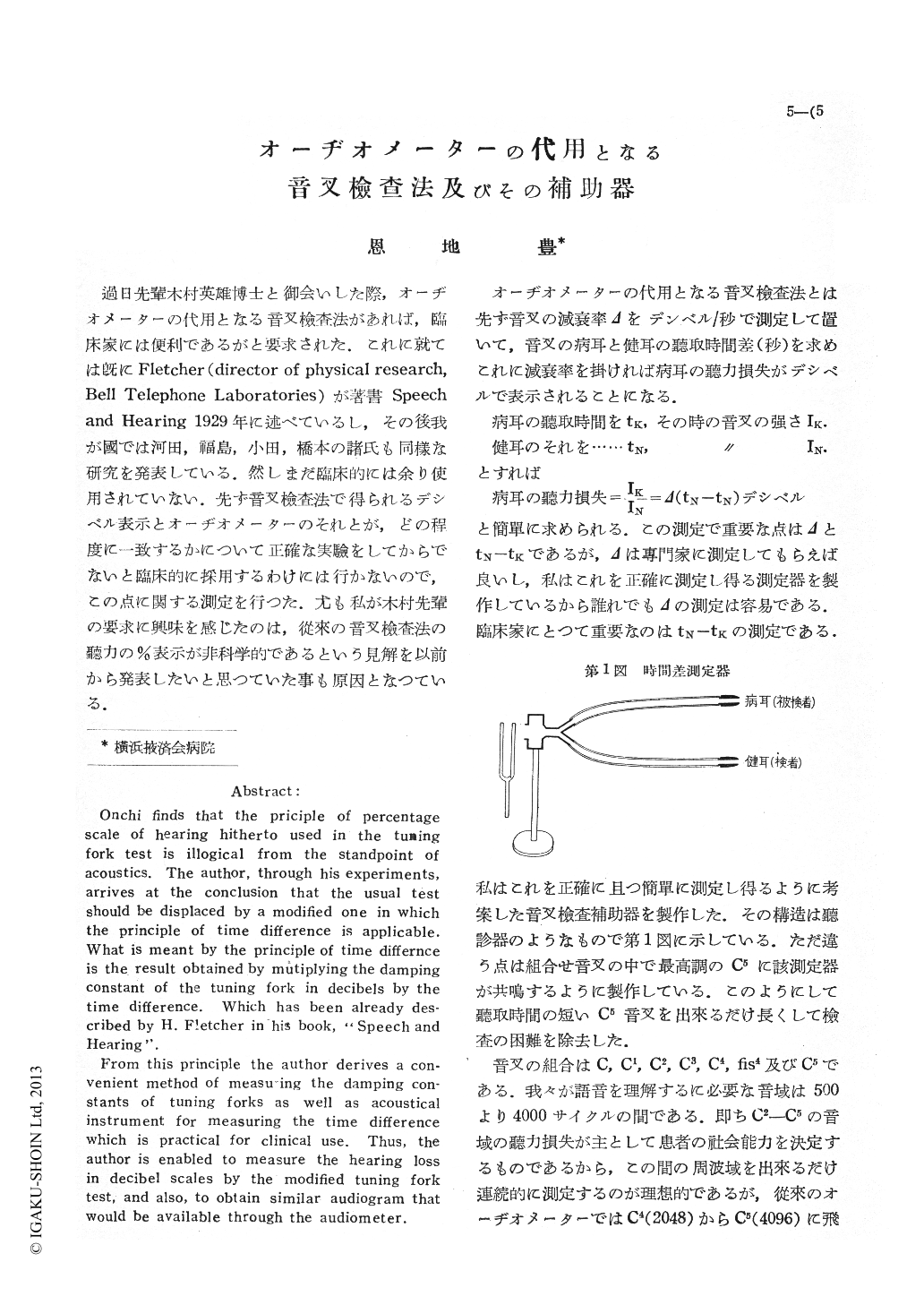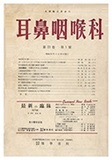- 有料閲覧
- 文献概要
- 1ページ目
過日先輩木村英雄博士と御会いした際,オーヂオメーターの代用となる音叉檢査法があれば,臨床家には便利であるがと要求された.これに就ては既にFletcher(director of physical research,Bell Telephone Laboratories)が著書Speech and Hearing 1929年に述べているし,その後我が國では河田,福島,小田,橋本の諸氏も同樣な研究を発表している.然しまだ臨床的には余り使用されていない.先す音叉檢査法で得られるデシベル表示とオーヂオメーターのそれとが,どの程度に一致するかについて正確な実驗をしてからでないと臨床的に採用するわけには行かないので,この点に関する測定を行つた.尤も私が木村先輩の要求に興味を感じたのは,從來の音叉檢査法の聽力の%表示が非科学的であるという見解を以前から発表したいと思つていた事も原因となつている.
オーヂオメーターの代用となる音叉檢査法とは先す音叉の減衰率Δをデンベル/秒で測定して置いて,音叉の病耳と健耳の聽取時間差(秒)を求めこれに減衰率を掛ければ病耳の聽力損失がデシベルで表示されることになる.
Onchi finds that the priciple of percentage scale of hearing hitherto used in the tuning fork test is illogical from the standpoint of acoustics. The author, through his experiments, arrives at the conclusion that the usual test should be displaced by a modified one in which the principle of time difference is applicable. What is meant by the principle of time differnce is the result obtained by mutiplying the damping constant of the tuning fork in decibels by the time difference. Which has been already described by H. Fletcher in his book, "Speech and Hearing".
From this principle the author derives a convenient method of measuing the damping constants of tuning forks as well as acoustical instrument for measuring the time difference which is practical for clinical use. Thus, the author is enabled to measure the hearing loss in decibel scales by the modified tuning fork test, and also, to obtain similar audiogram that would be available through the audiometer.

Copyright © 1951, Igaku-Shoin Ltd. All rights reserved.


